#lactifluus
Text
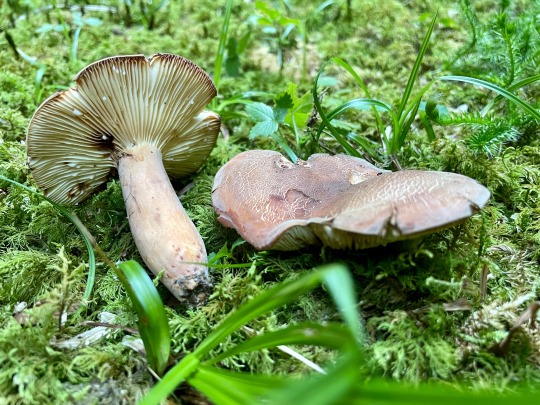
Milchbrätling, Lactifluus volemus 16.07.22
#mushrooms#pilze#mycology#fungi#wild fungi#mushrooms switzerland#pilz#mushrooms of switzerland#pilzesuchen#basidiomycota#lactifluus volemus#lactifluus#milchling#brätling#lactarius
109 notes
·
View notes
Text

Fishy milk cap mushroom for inktober day 7 🍄 ink & watercolor in moleskine sketchbook
✧ my links ✧
#milk cap#mushroom#fungi#mycology#fishy#lactifluus#inktober#nature#drawing#illustration#sketchbook#moleskine#ink#watercolor#bonlynx#my art
18 notes
·
View notes
Text

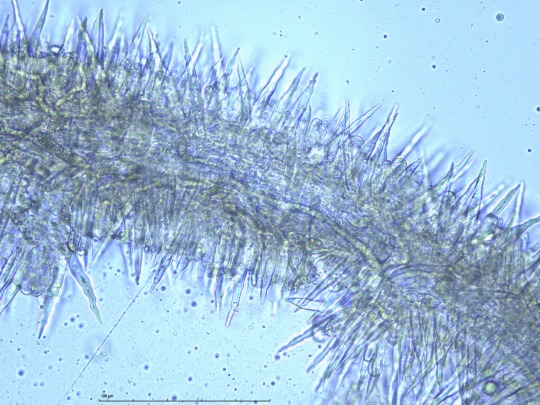
Cheilozystidien


Spores in iodine
Brätling, Lactifluus volemus
#mycology#microscope#mikroskopie#mushrooms#pilze#wild fungi#fungi#pilz#mushrooms switzerland#pilzesuchen#mushrooms of switzerland#basidiomycota#lactifluus#milchling#brätling
2 notes
·
View notes
Text

@rockbottle (I think I missed your online window but here it is!)
Happy Birthday my dear Tooth! You absolute angel! Chaotic, funny, and just plain spectacular. Wishes for the best!
NO kin/id/me/irl tags UNLESS you are him!!!
#let's hope on another year of being internet friends and mutuals!#[🦇] my art#do not tag as kin/id/me/irl UNLESS you are Sydney!!!#please don't crunch the quality tumblr#I want to type what mushrooms i drew#Mushies!!: indigo milk cap. shaggy ink cap. boletus edulis. lactifluus volemus. (my friend gave scientific name only for some)#you said indigo milk cap was your favorite right? :)#earthworm for that drawing of syd you did with the earthworms in the hair <3#ladybug i think you said you like them a lot once#jewelry is pretty self explanatory. you vibes (and i think you drew tooth necklace once) ALSO CINAMMAROLL NECKLACE that's cut off the scree#there's tiny heart catchlights#That's the references baybeee!#sydney o sargent#camp here and there#ch&t#sydney sargent
12 notes
·
View notes
Text

The Pull of the Parkway
by Rocco
8 notes
·
View notes
Text
Lomwé and Macua communities in Mozambique’s Zambezia province traditionally harvest wild mushrooms to eat alongside staples like cassava. Conservationists are working with hundreds of indigenous women there to commercialize the sale of mushrooms like the vivid orange Eyukuli (Cantharellus platyphyllus) as part of a wider strategy to protect forests surrounding Gilé National Park.
The mushrooms are harvested in a 55,600-hectare (137,400-acre) buffer zone surrounding the national park during the height of the Southern African country’s wet season, from November to April. After harvesting, the fungi are cleaned, dried, and transported by road to Maputo, the capital, more than 2,000 kilometers (1,200 miles) away. There, they’re packaged and sold under the trade name Supa Mama.
This is the first time that native Mozambican mushrooms have been commercialized in the country.
Gilé covers an area of 286,100 hectares (707,000 acres), much of this covered in miombo woodlands that include tree species, like those from the Brachystegia genus, whose roots host mycorrhizal fungi. These underground networks help the trees absorb nutrients and moisture, and announce their presence in the form of diverse fruiting bodies above the ground: mushrooms.
Providing an economic incentive to protect the trees could be key to leaving them standing while promoting the wild mushroom harvest, says Alessandro Fusari...
Communities living around Gilé harvest at least 46 species of mushroom for local consumption. These include eyukuli, the trumpet-shaped khaduve (Lactifluus edulis), and the broad-capped namapele (Lactarius densifolius). So far, a total of five species are being harvested and packed for commercial sale under the project.

Pictured: Cantharellus platyphyllus (called Eyukuli in Lomwé) is one of 46 wild mushroom species Indigenous women harvest.
“Slowly, the community, especially the women, are learning that keeping the trees standing means having a bigger production of mushrooms,” Fusari tells Mongabay. “Since they’re starting to see commercial results, more and more avoid cutting trees.”
The project, which is supported by the French Development Agency, is in its third year, meaning the team doesn’t yet have the hard data to determine its success. But, Fusari says, the reduction in tree cutting “is a clear trend that is happening.”
Mushroom harvesting around Gilé is typically done by women while out doing other tasks, such as gathering firewood. The mushroom project works with 900 or so members of 30 women’s groups drawn from communities living in the national park’s buffer zone.
Gilé National Park is home to animals that include buffalo, wildebeest, sable, waterbuck, and around 50 elephants. Many of these animals were reintroduced from other areas to rebuild the wildlife wiped out during Mozambique’s 1977-1992 civil war.
...Giving commercial value to something normally only collected for subsistence is part of a wider program to promote sustainable agriculture...
The teams collecting mushrooms have already been trained in sustainable harvesting methods. For instance, they cut rather than pull the mushrooms from the ground, to avoid damaging the mycelium, or root-like structure, beneath the surface; they brush the dirt off the mushrooms wherever they pick them, to leave as many spores there as possible; and the women carry their harvest home in open baskets, to allow spore dispersal along the way.
-via Good News Network, October 14, 2023. Based on reporting by Mongabay News, September 1, 2023.
#mozambique#mozambican#conservation#sustainability#national park#forest#forest conservation#mushrooms#fungi#wild fungi#mycorrhizal fungi#mycorrhizal network#sustainable agriculture#agriculture#good news#hope#mycelium#mushroom hunting#mycology#deforestation#also very cool info about sustainable mushroom harvesting tbh
220 notes
·
View notes
Text

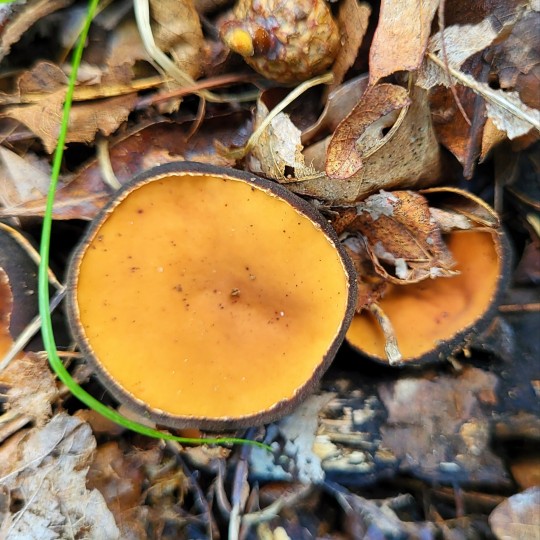


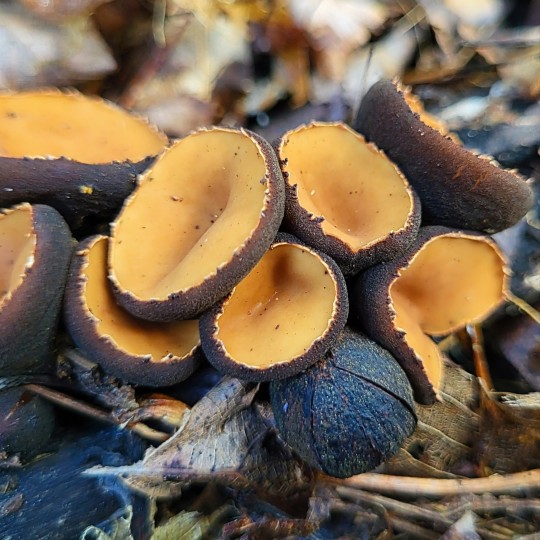

Galiella rufa, Lactifluus volemus and Russula sp.
#mycology#fungi#mushrooms#nature photography#dirtcore#goblincore#forestcore#foraging#forest floor#nature#the fungus among us
64 notes
·
View notes
Text

乳茸刺[Chidakesashi]
Astilbe microphylla
乳茸[Chidake|Chichitake] : Lactifluus volemus
刺[Sashi] : 刺す[Sasu], to pierce
It was so named because an edible mushroom called Chichitake was pierced through this stem and brought back home in the past.
https://en.wikipedia.org/wiki/Lactifluus_volemus
乳[Chi|Chichi] : Milk, breast
茸[-dake|Take] : Mashroom
9 notes
·
View notes
Text


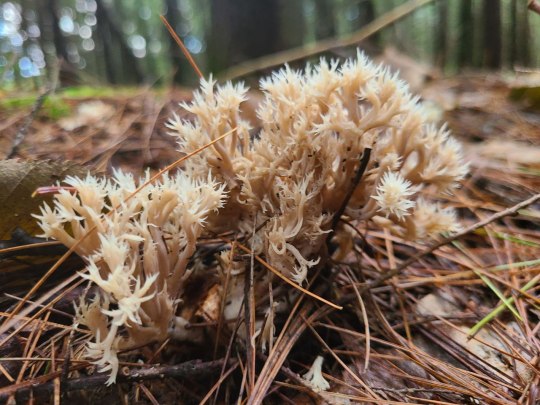

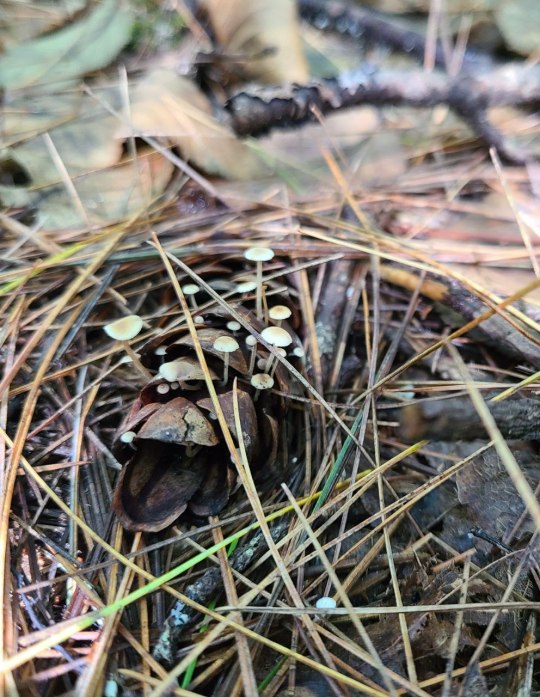

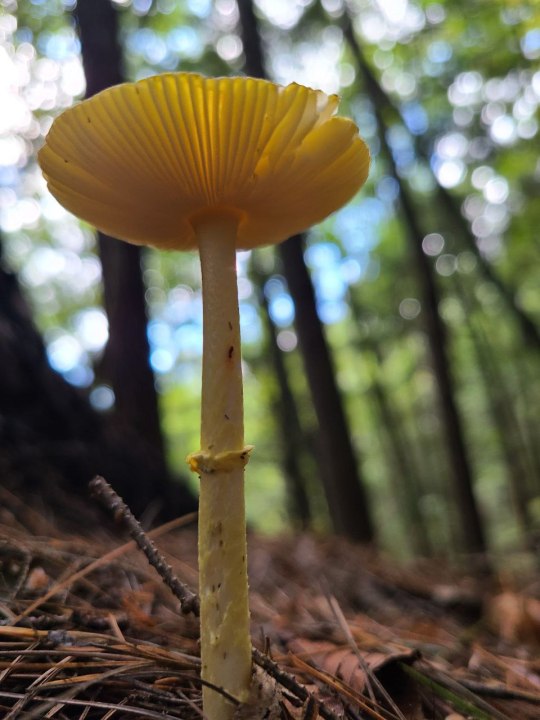
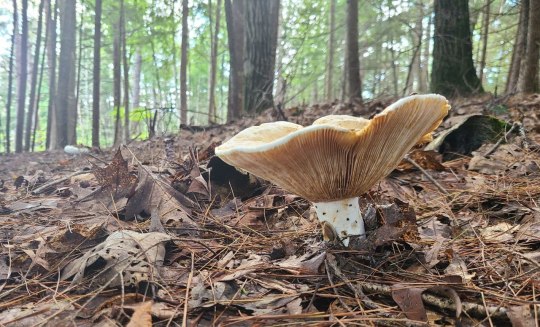

stories from the understory 🍄
(i am no mycologist so all of these IDs are tentative and based on iNaturalist but here are my best guesses:)
viscid violet cort (cortinarius iodes)
orange jelly spot (dacrymyces chrysospermus)
white coral fungus (clavulina coralloides)
blood red russula (russula rosacea)
conifercone cap (baespora myosura)
eastern north american destroying angel (amanita bisporigera)
frost's amanita (amanita frostiana)
lactifluus spp.
upright coral fungus (ramaria stricta)
weathersfield, vt
12 september 2023
(all photos taken by me)
#also if you have better guesses as to the IDs for these little guys please let me know!!!#i am so freaking blown away by the mushroom diversity in vermont it's so crazy#mushrooms#fungi#wild fungi#fungilove#fungicore#fungus#mycology#understory#forest#stories from the understory
2 notes
·
View notes
Text

きのこ図鑑
No.372 クロチチダマシ
Lactifluus gerardii
1 note
·
View note
Text
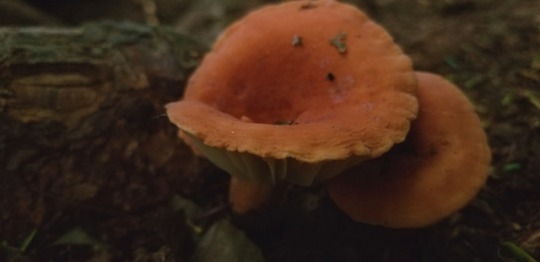
Lactifluus hygrophoroides
(Milk caps)
#photographers on tumblr#my photography#afelegie#foraging#mushrooms#choice edibles#lactarius#Lactifluus#milkcaps#vegetarian#eat wild#noms#pennsylvania#breakfast today
29 notes
·
View notes
Text
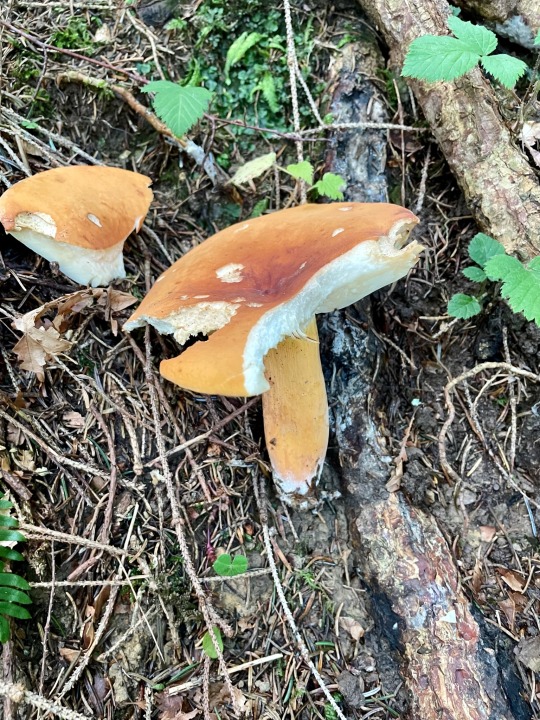
My first,, Brätling, lactifluus volemus
First founds are always the greatest🥳🥳 03.09.21
#mushrooms#pilze#basidiomycota#fungi#mycology#wild fungi#pilz#pilzesuchen#mushrooms switzerland#mushrooms of switzerland#lactifluus#lactifluus volemus#Brätling
0 notes
Video
Slight laceration to a milk cap mushroom to get that latex - I think this one is a Lactifluus vellereus because of its sunken center of cap . . . . . #mushrooms #mushroomsofinstagram #fungusamongus #lactifluus #milkcap #forest #foraging #fungi #mycology #mycophile (at Tolland County, Connecticut) https://www.instagram.com/p/B0Y7ToilJV8/?igshid=e8mffe439uoi
#mushrooms#mushroomsofinstagram#fungusamongus#lactifluus#milkcap#forest#foraging#fungi#mycology#mycophile
0 notes
Photo
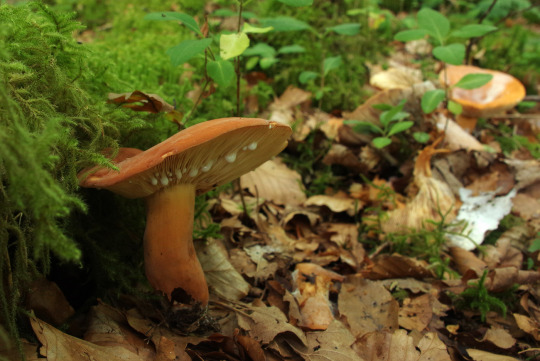
Lactifluus volemus in the woods yesterday.
418 notes
·
View notes
Photo
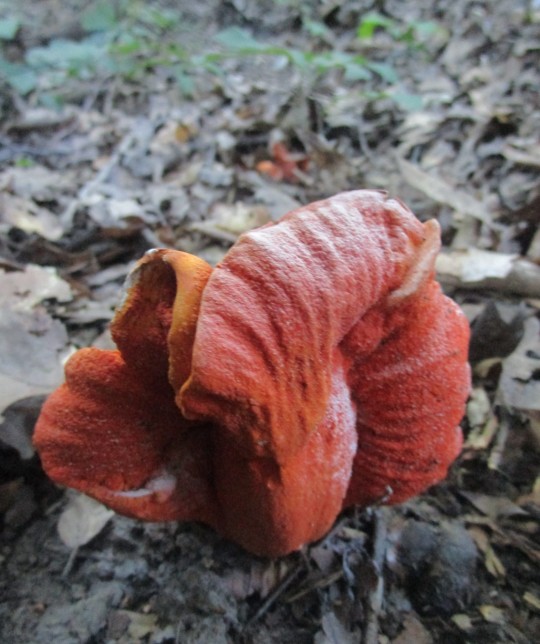

Hypomyces lactifluorum
Lobster Mushroom
I had a good feeling.
That’s what led me off trail in the August heat last year to trudge up and down a nasty slope.
I’m not making some ridiculous claim at a sixth sense for mushrooms.
Usually, my “good feelings” are crap, but I go where I haven’t been to find what I haven’t found. I get some amateur sense for what conditions are good and play a guessing game.
I guessed right.
Hypomyces lactifluorum is a fungus that parasitizes other fungi. It attacks Lactarius, Lactifluus, and Russula mushrooms, morphing their growth beyond recognition, preventing spore development, and encrusting the mushrooms in shades of sunset.
A study at the University of Quebec found that when fully infected, DNA in the host mushroom is mostly that of the Hypomyces, with only trace amounts of the host’s genes remaining.
Creepy, but only if you think about it.
I thought i’d hit some jackpot after finding only the first one partially hidden by leaflitter. Standing up again to look around, I and my mushrooming buddy were finding them all over, though we had to work our legs a bit.
Their resemblance to lobster alone is uncanny, but their smell and taste were almost unbelievable when cooked.
There’s a running joke that this is the safest seafood in the Midwest.
Only its texture differed from the pricy crustacean but was pleasing in its own right.
With a mind for the right conditions, season, and habitat, plus maybe a touch of intuition, I hope to get lucky like this year after year.
Not so lucky for the hosts, but Hypomyces lactifluorum has to live its life. And it makes mine a little tastier for it.
18 notes
·
View notes